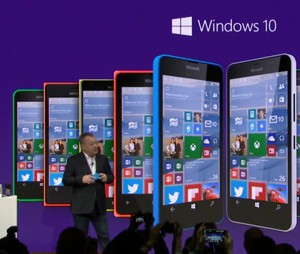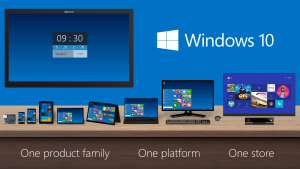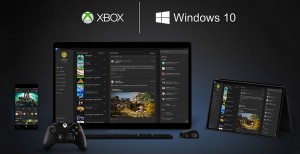
By Gadjo Cardenas Sevilla
Microsoft is all about Windows 10 on all devices. Will their ‘One OS to rule them all,’ strategy pay off?
Windows 10 is the biggest change to the Microsoft operating system platform. Not only is it expected to be the most adopted version in years, Microsoft is making Windows 10 ubiquitous across PCs, tablets and even smartphones.
In the past, Microsoft would have a desktop OS which was Windows 8.1, it had Surface RT for the ARM-powered Surface tablet and Windows Phone 8.1 for Lumia mobile devices.
While these disparate operating systems shared a tile-based ‘Modern’ design, the types of apps that could run on these devices varied sizes and dimensions were far from universal.

For Windows 10, which comes out later this year, Microsoft wants to give users across devices similar experiences and user interfaces.
This also means an opportunity for developers to make their applications available in a variety of devices. Windows 10 devices, including PCs, phones and Xbox consoles, will share an app store.
“Some of these devices have four-inch screens. Some of these devices have 80-inch screens. Some don’t have any screen at all,” said Terry Myerson, Microsoft’s Executive vice president of operating systems . “Some you hold in your hand. Some you sit 10 feet away from and use with a controller or gestures. Some include a touchpad, some a mouse and keyboard. Some switch between input devices.”

If done right, end-users will value the Microsoft ecosystem even more, and possibly choose their next smartphone on the merit that it is similar or interoperable with their desktop or notebook.
“We want to move from people needing Windows to choosing Windows to living Windows,” Microsoft CEO Satya Nadella when Windows 10 was first announced. This means the company really puts value in their ability to develop the ecosystem as well as the user experience across devices.
The challenge for Microsoft and Windows 10 developers will be ensuring that they can keep on top of the quality of applications and services, and make sure that similar experiences translate well on all their devices.
If Microsoft can fine-tune Windows to work efficiently and play to the individual strengths of various devices.
They already sell Signature Edition PCs and tablets in their stores and online, which run Windows without bloatware. Since buying Nokia, Microsoft has released most of the Windows Phone devices out there, so it should likewise be easy for them to ensure that the OS, the apps and the user experience is optimized for these devices.



